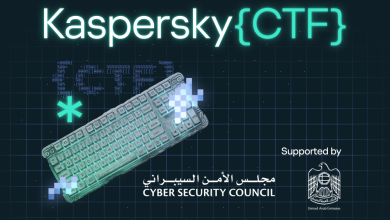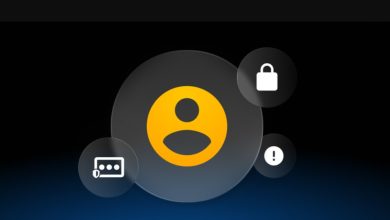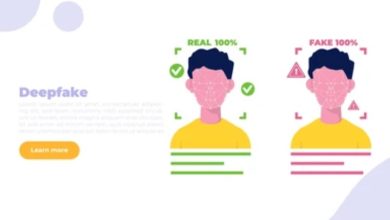Security Service Edge: The Cybersecurity Framework for Today

Author: Don Tan, Senior Director APAC at Lookout

It is becoming increasingly difficult to guarantee a safe boundary for your sensitive data. In the wake of the pandemic, accelerated digital adoption was crucial for business continuity. However, as employees worked from home, traditional perimeter security solutions proved ineffective in the face of an expanding threat surface and highly sophisticated cyber attacks.
Even with the easing of COVID-19 restrictions allowing employees to fully return to workplaces, hybrid work arrangements continue to be the trend due to its benefits to productivity. In Singapore, a majority of workers feel that flexible work arrangements should become the norm, according to an Institute of Policy Studies (IPS) survey conducted last year.
Organisations in the public and private sectors benefit from the scale and flexibility of the cloud. This allowed institutions like the Ministry of Education (MOE) to conduct home-based learning classes for thousands of students during the circuit-breaker period. Meanwhile, the recent eConomy SEA 2021 report by Google, Temasek, and Bain & Company also showed that more than half of digital merchants in Singapore were adopting cloud storage tools for their businesses. When harnessing the cloud, information becomes accessible for employees working remotely, and companies gain flexibility in meeting business demands when not tied down to local servers.
The freedom to collaborate more broadly also meant information being shared among devices, applications and networks that an organisation doesn’t necessarily have control over. In a recent speech by Miss Josephine Teo, Minister-in-charge of Smart Nation and Cybersecurity, she explained that experts predicted that there would be about eight interconnected devices per person by 2025. These devices, from laptops and smartphones to fitness watches or smart televisions may serve as potential targets of sensitive data theft.
This new climate does not just put proprietary information at risk, it also makes complying with regulations much more difficult. When users, applications and data sit outside your perimeter defences, it becomes difficult to provide geo-specific access or enforce encryption over regulated data.
To ensure data is protected while productivity remains high, organisations need an integrated, cloud-delivered approach to cybersecurity. Security Service Edge (SSE) as defined by Gartner in 2022 has become the go-to framework to achieve that.
SSE: Security Service Edge
SSE is closely related to Secure Access Service Edge (SASE), a concept conceived in 2019, during a period when organisations were struggling with new data security requirements that emerged from the increasing adoption of cloud technologies — a trend only hastened by the pandemic.
These cloud technologies include software-as-a-service (SaaS) applications, such as Microsoft 365, and Google Workplace, and enterprise apps running in infrastructure-as-a-service platforms (IaaS), such as Amazon Web Services, Azure, and Google Cloud Platform. Implementing SASE is a journey that will take time.
SSE goes beyond just having the right alphabets in your soup, it’s the idea of consolidating security technologies in the cloud to reduce complexity and enhance data security as employees access the web, cloud services and private apps from anywhere. So why does SSE matter and what data security capabilities should an SSE platform have?
Protecting Data When Remote Work and Cloud Services Circumvent Perimeter Security
With apps and data increasingly residing in the cloud, users now expect seamless access from anywhere and on any device. However, this has resulted in organisations grappling with complexity due to security controls deployed with disparate on-premises tools anchored to data centres. As a result, the ability to secure data while migrating to the cloud is compromised.
This is where the SASE promise comes in, converging key networking technologies, such as Software-defined Wide Area Networks (SD-WAN), with technologies that secure both access and data which technological research and consulting firm Gartner calls SSE. The SSE technologies that may be most familiar are Cloud Access Security Broker (CASB), Zero Trust Network Access (ZTNA) and Secure Web Gateway (SWG).
However, the real value is in the data protection services that ensure data is not exposed when it is copied or downloaded from the cloud.
The idea is that, by integrating data security natively with these access technologies, organisations can implement a streamlined platform that enables them to regain control of their data by securing it wherever it goes, reducing risk and simplifying security operations.
SSE’s Core Objective: Protect Your Data
Just like how traditional security was costly and inefficient because it was a mishmash of disparate products, SSE technologies have to be integrated and with the goal of securing sensitive data and reducing risk. To do so effectively, security teams need integrated insights into users, endpoints, data and apps.
An SSE framework could include the integration of endpoint security, with advanced users and data protection capabilities. With these native to the platform, we can enforce intelligent Zero Trust access to varying degrees of granularity that matches both the risk level of users and endpoints and the sensitivity level of the data. The following are consolidated solutions that make up an SSE framework.
UEBA: Stop Insider Threats and Compromised Accounts
In 2019, the sensitive health data of more than 14,000 people in Singapore was leaked online from a single user. While The Ministry of Health (MOH) had known the nature of the data taken and the user with the information, little could be done to halt the leak as it was carried out maliciously by the user account. Your data is often put in harm’s way due to stolen credentials or an insider acting maliciously. This is where User and Entity Behavior Analytics (UEBA) comes in, monitoring the fluctuating risk levels of your users.
By understanding how your users typically behave, you can spot when an account — whether it’s compromised or being used by a legitimate user for malicious activities — is putting your data at risk.
DLP: Discover and Secure Your Data
To make smart access decisions, you also need to know the sensitivity level of the data your users seek to access. With advanced Data Loss Prevention (DLP) integrated, security teams are able to take granular actions. For example, you may want to watermark or redact certain content instead of blocking access so you protect sensitive information while allowing work to get done.
EDRM: Encryption That Follows Your Data
The final layer of data security is the ability to automate encryption. In 2021,12 000 sensitive files were stolen from pharmaceutical company Pfizer, including trade secrets related to its COVID-19 vaccines. While Pfizer later knew the sensitive nature of the data taken and which user did it, they weren’t able to stop it. With Enterprise Digital Rights Management (EDRM), organisations can encrypt data while it’s downloaded so that only authorised users can access, even when shared offline.
Reduce Risk and Protect Your Data
At the end of the day, SSE and SASE are just frameworks. It’s up to individual organisations to find a vendor that suits their requirements.
To secure data and reduce risk, an organisation must adopt a platform that incorporates endpoint security with SSE that natively integrates UEBA, advanced DLP and EDRM to keep data secure wherever it goes. This would enable organisations to implement Zero Trust to protect data, reduce risk and increase operational efficiency by closing gaps created by disparate point products.




